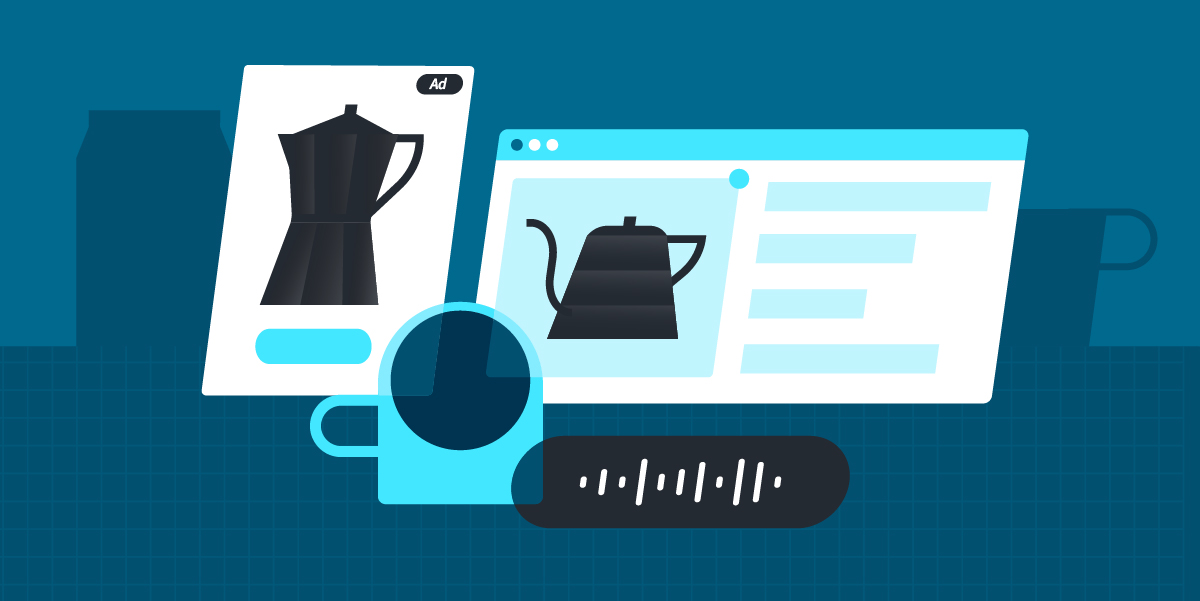The majority of marketers agree that programmatic advertising is a game changer.
Our latest research shows that more than three in four (75.1%) marketers say that programmatic advertising can help scale campaigns. The same study found that seven in ten (69.8%) marketers plan to increase their programmatic spending over the next 12 to 18 months.
Some marketers are still not ready to adopt programmatic as part of their digital marketing strategy. Forty-three percent of respondents said programmatic takes up too much time—while nearly 60% struggled with analyzing the data and deploying actionable insights.
Yet, programmatic is only growing in demand. More than 2 in 5 marketers note that 50% to 74% of campaign spend is typically allocated toward programmatic advertising. So, where is the disconnect?
“Programmatic is a lot simpler and user-friendly than marketers think,” says Amika Evans, Sales Director at StackAdapt. “Yes, it forces companies to adapt and pivot quickly, but those that do will see radically better results.”
Ready for your programmatic advertising 101 guide? Then read on!
What is Programmatic Advertising
Before we dive into misconceptions about programmatic, let’s unpack what programmatic buying is.
Programmatic advertising is a form of media buying that enables media buyers to purchase advertising space using a programmatic platform that leverages data insights and algorithms to reach the right users.
It’s a process for buying advertising space that is automatic, rather than the traditional process which is typically manual. This automatic process serves ads at the right time, and at the right price.
There are many different channels and formats that marketers can leverage in programmatic advertising, but some of the common ones are native, display, audio, video, connected TV (CTV), and in-game.
And, it’s possible to use a mix of complementary channels with a multi-channel strategy. A multi-channel strategy increases the percentage of the total target audience that you can reach, and it helps you to craft a brand story throughout the entire customer journey.
Programmatic Advertising 101: Common Misconceptions
You know what programmatic advertising is. Now, it’s time to go from hesitant to confident by unpacking 4 common misconceptions about programmatic advertising.
Misconception #1: Programmatic takes too much time.
Time is a top concern for many marketers. Nearly half of marketers (48.3%) cite a lack of time to manage campaigns as what prevents them from using programmatic more frequently.
The first lesson in this programmatic advertising 101 guide? The right programmatic platform can actually save your team time—lots of it.
“Programmatic can feel a lot like a personal shopper, but with your inventory,” explains Evans, “and who doesn’t love being able to access various channels and varying audiences in a millisecond?”
To get more specific, take this example from Troy Davis, Director of Communications and Public Affairs at Global Strategy Group. “Years ago, if I wanted to run native, display, and audio ads, I’d have to work with three vendors and coordinate with three people. Naturally, this could take up a lot of time.”
“But now there are programmatic platforms like StackAdapt that allow you to do all those things in one place, and it allows you to find efficiencies across all those channels. Why work with four different people when you can work with one?”
Misconception #2: The cost of engaging a programmatic partner is too high.
Many marketers believe engaging a programmatic partner is too expensive. Almost half of the marketers surveyed (48.3%) cite the cost of engaging a programmatic advertising partner as what prevents them from using programmatic more frequently.
The truth? You can scale campaigns and better understand customers’ preferences—while saving money.
“Programmatic is more cost-effective than having to go direct,” says Evans. “Imagine going direct, brokering contracts, and trying to make deals. Whereas programmatic takes all the data and runs it in a fraction of a second to find the inventory for you.”
Programmatic also gives you more leniency to choose what your ultimate cost model will look like. (And programmatic is always going to find you the lowest cost.)
Misconception #3: Analyzing data and insights from programmatic is too complicated.
Some marketers find it can be challenging to make quick decisions during a campaign—47.4% cited a lack of insights and data as the number one issue. While 36.8% cited a lack of resources or teams focused on analysis.
Programmatic advertising 101 truth? Making decisions is easy with the right programmatic platform.
Eighty-two percent of marketers agree that programmatic advertising can provide unique data and insights. Naturally, it can be challenging to be agile when inundated with data. So, the disconnect here points to a lack of clarity and a need for simplification.
“I think it’s imperative to talk to your clients and ask what the goals and purpose of running media are so that you can clearly define what types of data you need,” explains Davis.
Plus, platforms like StackAdapt can help ramp you up. “One thing I’m really proud of at StackAdapt is that every customer receives baseline training,” says Evans. “You also get a dedicated team complete with an account executive, account manager, and programmatic strategist who help you understand how to read your data in real-time, slice and dice information, and provide future recommendations.”
Misconception #4: AI-driven contextual advertising is difficult to understand and implement.
As humans, we tend to avoid things we aren’t comfortable with. Perhaps that’s why only ⅓ of marketers feel “extremely familiar” with contextual advertising.
The truth? Contextual advertising helps you break down barriers and overcome walled garden limitations.
Your audience doesn’t live in one place, making contextual advertising the key to getting you the reach you need.
“I love it when I see marketers get excited about audience capabilities and what that could afford them,” shares Evans. “Contextual advertising allows you to move past limitations and increase efficiency, and once customers start to see the results themselves, they just get it.”
As a contextual advertising customer, Davis agrees. “The efficiency makes things so much easier on my creative team and really streamlines our ability to place ads.”
4 True Benefits of Programmatic Advertising
What do unique reach, unique audience points, and surpassing the status quo all have in common? They are all a result of programmatic advertising. “Programmatic is making a splash in the industry and will continuously do so moving forward,” says Evans.
So what benefits does programmatic really offer?
1. Dynamic solutions that are scalable, flexible, and transparent.
The scalability, flexibility, and transparency of programmatic makes it a suitable advertising strategy for a range of businesses, from small to large, and across industries.
You have total visibility over your campaigns in that you can see exactly what sites your ads are placed on, what audiences are seeing them, and the return on investment (ROI) earned from your campaigns.
2. Insights that surpass the status quo.
Once a programmatic campaign is live, you’re able to track the metrics that are most important, and look into site transparency, geo performance, audiences and more. You can review real-time metrics and optimize for maximum performance.
With the right programmatic partner, you can verify your ads served on relevant domains pre- and in-flight. This gives you the ability to revise your selected topics and keywords in real-time to improve the performance of your campaigns.
3. Multi-channel campaigns that reach audiences wherever they are.
One of the best aspects of programmatic advertising is that it provides marketers the ability to create a cohesive experience across multiple channels, including emerging ones.
With consumers adopting new channels all the time, it’s important that marketers follow suit by introducing and experimenting with those new channels in their media mix.
4. Context that makes for happy consumers and happy clients.
With targeting tactics like contextual advertising, you can target niche contexts by specifying a topic or a collection of keywords. When a person is browsing content about a specific topic, it signals their intent at that moment.
For example, if a user is reading a blog about coffee, they are in a receptive frame of mind when it comes to content and ads related to coffee. With cookieless tactics, marketers have an opportunity to diversify methodologies and experiment with new marketing strategies that capture the right users, in the right moment.
It’s Time to Get Started With Programmatic
In this programmatic advertising 101 guide, we’ve covered misconceptions around programmatic advertising, and why programmatic is here to stay. Marketers who ditch the misconceptions will drive performance, and game-changing results.
One of the best aspects of programmatic advertising is that it provides marketers the ability to
create a cohesive experience across multiple channels, including emerging ones. With consumers adopting new channels all the time, it’s important that marketers follow suit by introducing and experimenting with those new channels in their media mix.
The first step to getting your digital campaigns up and running? Find the right programmatic partner. The right partner will have features and support that will help you go from the campaign planning stage, to launch and optimization smoothly, and quickly.
Want to run exceptional programmatic campaigns? Request a demo to learn more about StackAdapt.





